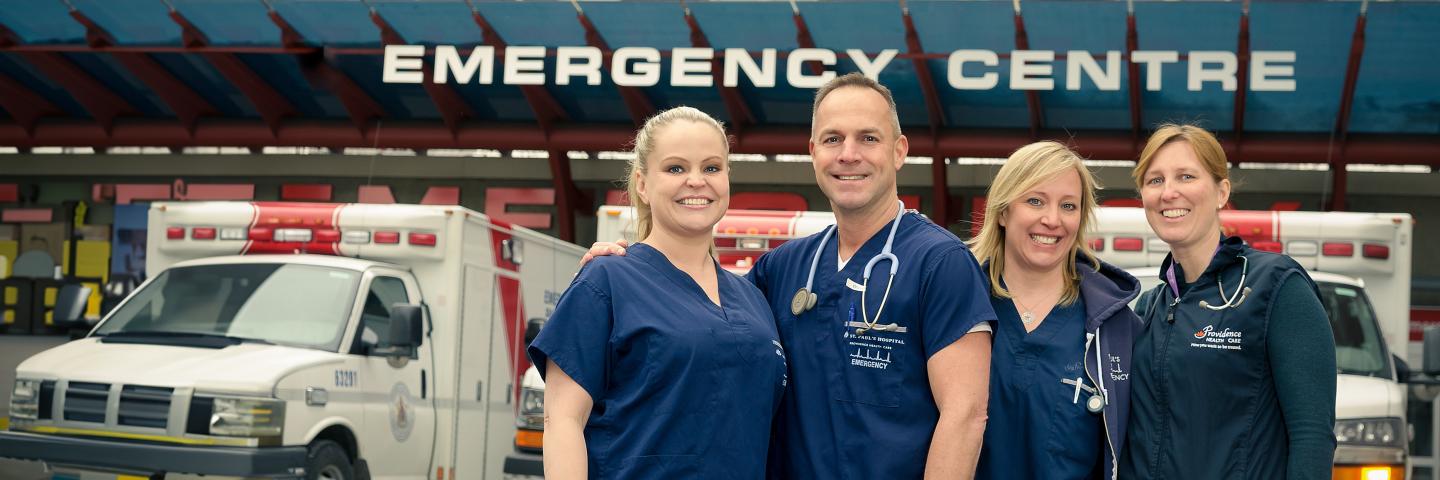What medical care do I need?
Not sure where to go for care? Use this guide to decide before you go.

Choose the right care for your situation
Accidents, illnesses and injuries often happen unexpectedly and quickly. This guide offers you a brief reference to decide what kind of care is best for your situation or that of a someone you’re helping.
When to go to your family practitioner or a walk-in clinic
For day-to-day non-urgent and ongoing primary care, it’s best to visit your family doctor or family practitioner. Walk-in clinics also provide basic care for non-urgent illnesses or minor injuries.
Not everyone can access a primary care clinic or a family doctor so you can consider other types of services including those offered through pharmacies and centralized Urgent & Primary Care Centres.
Tips for finding a family doctor (BC College of Family Physicians)
Find a walk-in clinic by calling 8-1-1 or go to HealthLinkBC’s Directory
When to access Expanded Pharmacy Services
In British Columbia, you can now visit a pharmacist to get assessed and receive treatment for 21 minor ailments as well as contraception. This service is free to all B.C. residents with a Personal Health Number and is available at local pharmacies.
For most prescriptions, your pharmacist can:
- Prescribe for minor ailments and contraception
- Renew your prescription
- Adjust the dose or the timing for how you take or use your medication
- Change the formulation of your medication (for example, from a tablet to a capsule or a liquid)
- Substitute your medication for a different but similar medication
When to go to an Urgent & Primary Care Centre
Urgent and Primary Care Centres (UPCCs) provide access to same-day, urgent, non-emergency health care. UPCCs are often open evening, weekends and statutory holidays (actual hours vary by clinic). UPCCs provide an alternative to visiting an emergency department for non-emergency issues.
Some examples of injuries/illnesses that may be treated at a UPCC are: sprains and strains, high fever, worsening chronic disease, minor infections, and new or worsening pain.
Find a UPCC near you
When to call 9-1-1 or go to the Emergency Department
Emergency departments in hospitals offer treatment for when you need Immediate action for physical health, mental health, or overdose. If you’re not sure if you need to go to Emergency, review these criteria. If in doubt, be safe and call 9-1-1. Call 9-1-1 or get to the nearest hospital emergency if you have:
- Discomfort or tightness in the chest
- More than usual shortness of breath
- Abdominal pain
- Prolonged and persistent or sudden onset headache
- An injury that may require stitches or may involve a broken bone
Or if you are experiencing:
- A major crisis and, as a result, feel helpless, hopeless and have nowhere to turn
Any of the following:
- Confusion
- Agitation
- Unconsciousness
- Severe allergic reaction
- Swelling of the tongue, lips or throat
- Severe pain
- Irregular heartbeat
- Seizure
- Paralysis
- Weakness or loss of sensation
- Severe vomiting
- Dehydration
- Vomiting blood
- Blood or black colour in the stool
- Overdose
In the Emergency Department, patients are seen by a doctor on a priority basis. Priority is based on the severity of the patient’s condition upon arrival. Wait times can vary depending on time, location and level of need.
Note about ED Wait Times:
This is an average wait time and may change based on the number and severity of other patients attending the ED. So please note that this is an estimated time and not a guarantee.
Last reviewed: January 23, 2025